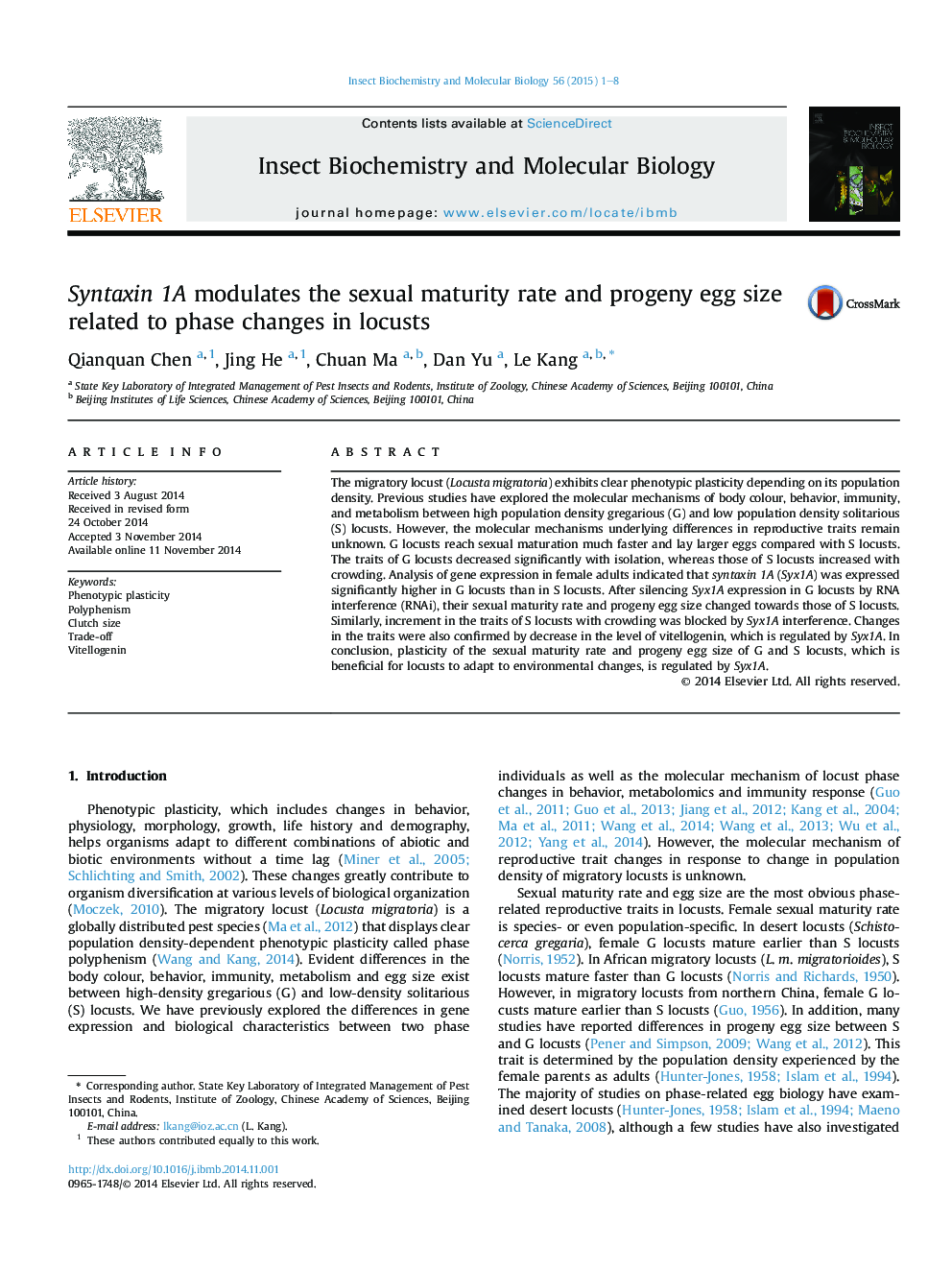| Article ID | Journal | Published Year | Pages | File Type |
|---|---|---|---|---|
| 1982076 | Insect Biochemistry and Molecular Biology | 2015 | 8 Pages |
•Locusts exhibit clear phenotypic plasticity in sexual maturity rate and egg size.•Syntaxin 1A expression correlates well with sexual maturity rate and egg size.•Syntaxin 1A modulated these two phenotypes through regulating vitellogenins.
The migratory locust (Locusta migratoria) exhibits clear phenotypic plasticity depending on its population density. Previous studies have explored the molecular mechanisms of body colour, behavior, immunity, and metabolism between high population density gregarious (G) and low population density solitarious (S) locusts. However, the molecular mechanisms underlying differences in reproductive traits remain unknown. G locusts reach sexual maturation much faster and lay larger eggs compared with S locusts. The traits of G locusts decreased significantly with isolation, whereas those of S locusts increased with crowding. Analysis of gene expression in female adults indicated that syntaxin 1A (Syx1A) was expressed significantly higher in G locusts than in S locusts. After silencing Syx1A expression in G locusts by RNA interference (RNAi), their sexual maturity rate and progeny egg size changed towards those of S locusts. Similarly, increment in the traits of S locusts with crowding was blocked by Syx1A interference. Changes in the traits were also confirmed by decrease in the level of vitellogenin, which is regulated by Syx1A. In conclusion, plasticity of the sexual maturity rate and progeny egg size of G and S locusts, which is beneficial for locusts to adapt to environmental changes, is regulated by Syx1A.
Graphical abstractFigure optionsDownload full-size imageDownload high-quality image (221 K)Download as PowerPoint slide
